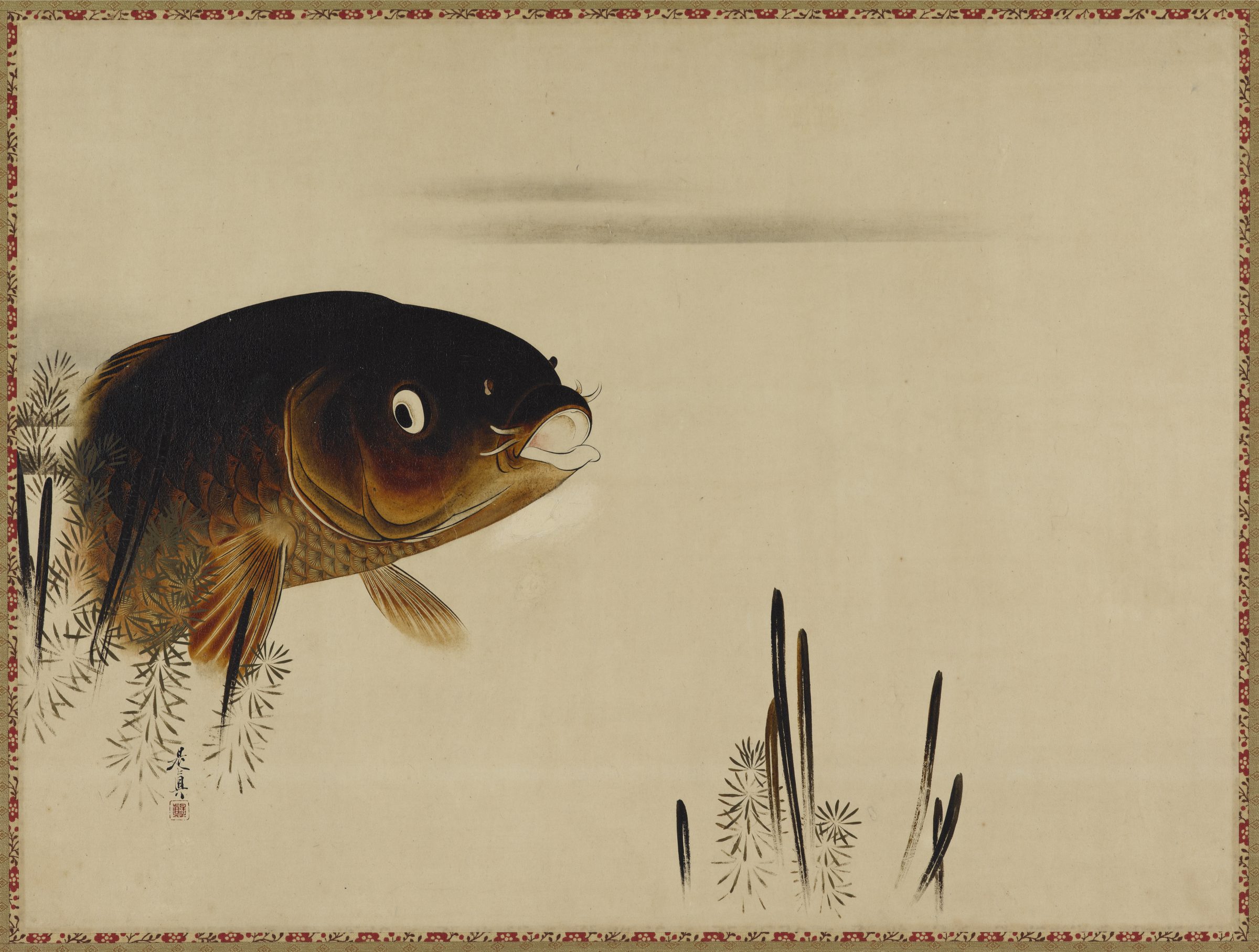Introduction
The artist who painted this carp, Shibata Zeshin, used lacquer made with the poisonous sap of the lac tree to create the impression of a carp swimming in water. Zeshin was both a painter and a lacquer artist, trained in the Ōkyo school. In this work, you can see the influence of shasei (painting directly from nature to imbue living creatures with inner lives) in Zeshin’s careful detailing of the carp’s scales and its playful personality. Other than the fish, Zeshin’s painting is mostly empty space, with only faint brushstrokes above the fish to suggest water. Water is translucent and usually transparent; how did Edo artists create the illusion that their painted fish are underwater?
Carp were considered auspicious subjects, as they are strong enough to thrive even in muddy waters. Another artist, Kuroda Toko, painted an image of carp swimming in murky waters that is so realistic, it looks like a negative image of a black-and-white photograph. Maruyama Ōkyo, on the other hand, used fluid lines to suggest flowing water. More than anything, it is the sense of life all of these artists instilled in their depictions of fish that inspires viewers to imagine the animals in their acquatic habitats.
